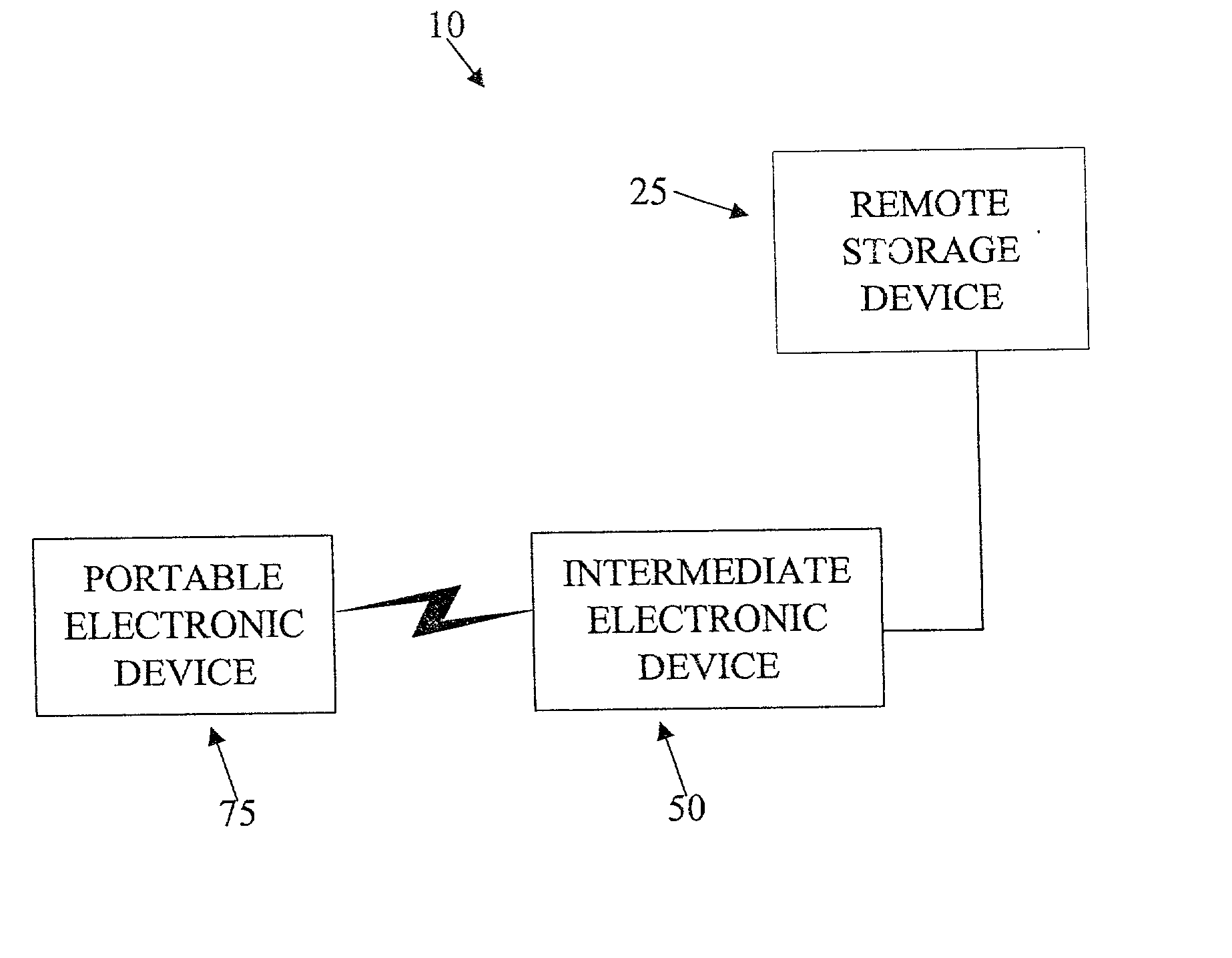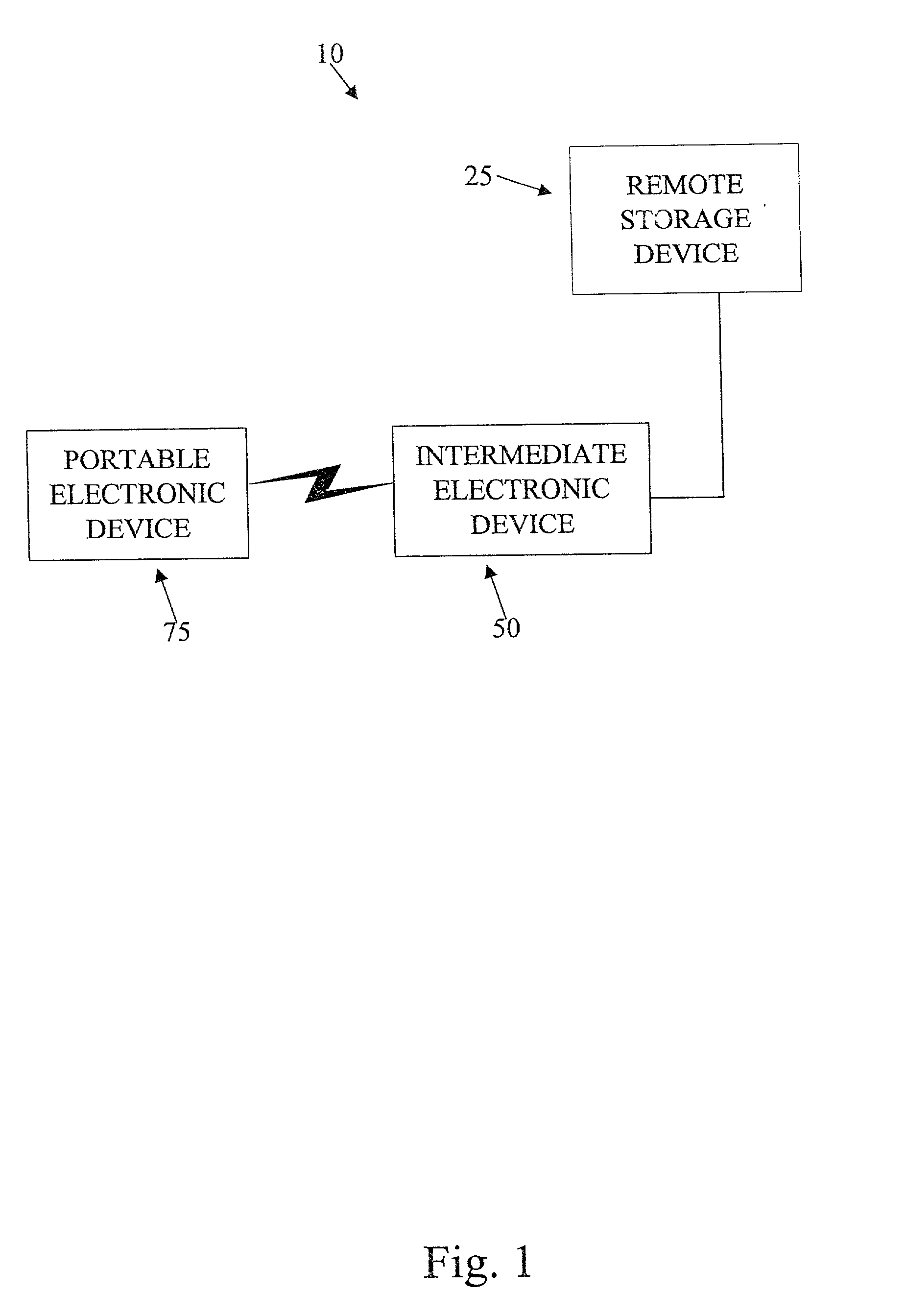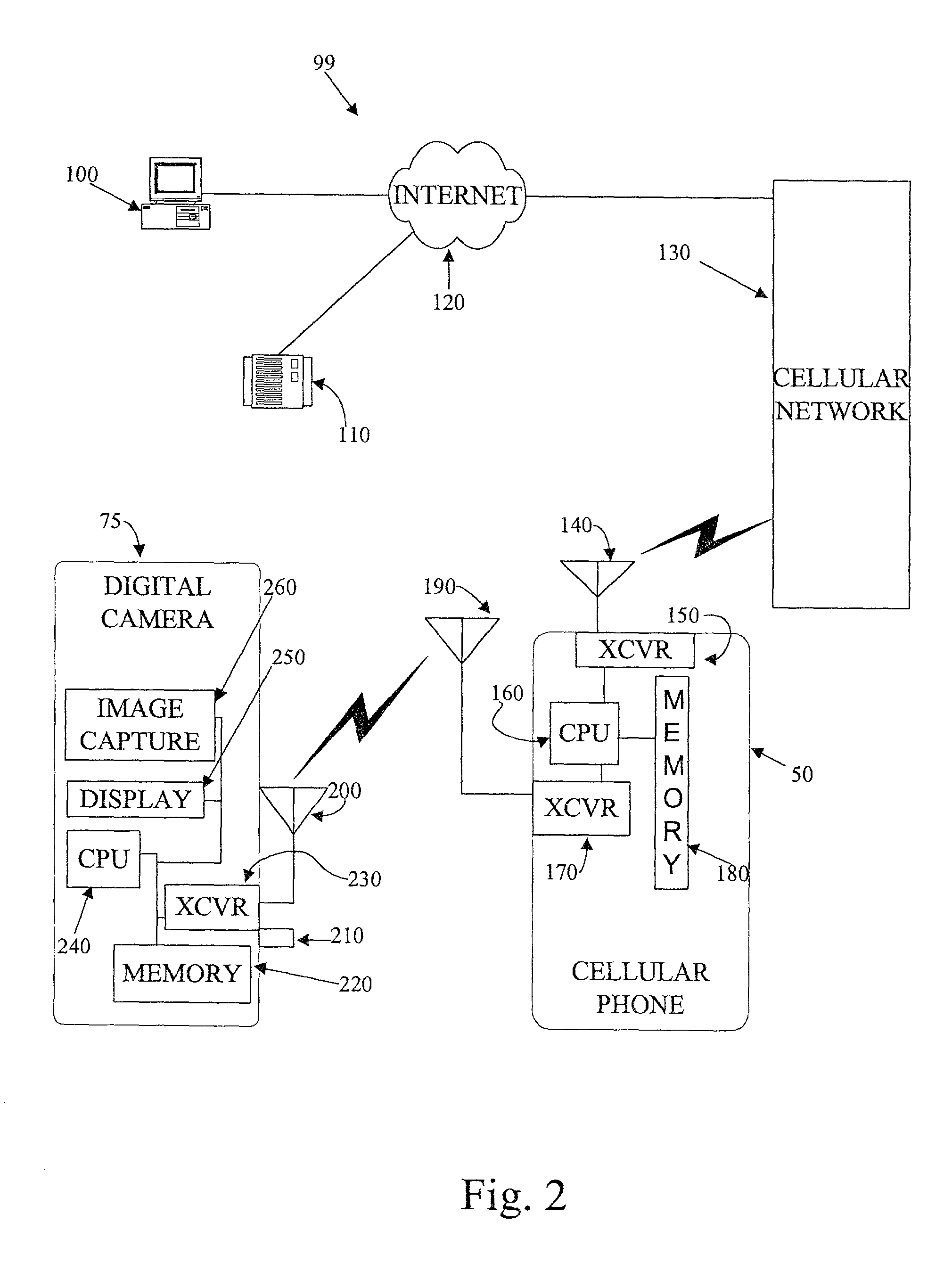Remote storage for electronics
a technology for remote storage and electronics, applied in the field of remote storage for electronics, can solve the problems of limited number of pictures the camera can take, increased file size of the resultant picture, and limited memory capacity
- Summary
- Abstract
- Description
- Claims
- Application Information
AI Technical Summary
Benefits of technology
Problems solved by technology
Method used
Image
Examples
Embodiment Construction
[0009] The problems noted above are solved in large part by a system and a method for remotely transmitting information from a portable electronic device for storage to a remotely coupled storage device. The portable electronic device preferably communicates with an intermediate electronic device, which in turn communicates with a remote storage device. One preferred embodiment of the portable electronic device is a Bluetooth-enabled camera that communicates to a cellular telephone via a Bluetooth wireless link. The telephone may then use a 3G wireless link and the Internet to communicate with a remote device such as a server, an application service provider ("ASP") and the like. Providing a communications link from a portable device to a remote device advantageously permits the portable device to offload some or all of its data (e.g., pictures in the embodiment in which the portable device is a camera,) thereby reducing the reliance on the local memory of the portable device.
[0010]...
PUM
 Login to View More
Login to View More Abstract
Description
Claims
Application Information
 Login to View More
Login to View More - R&D
- Intellectual Property
- Life Sciences
- Materials
- Tech Scout
- Unparalleled Data Quality
- Higher Quality Content
- 60% Fewer Hallucinations
Browse by: Latest US Patents, China's latest patents, Technical Efficacy Thesaurus, Application Domain, Technology Topic, Popular Technical Reports.
© 2025 PatSnap. All rights reserved.Legal|Privacy policy|Modern Slavery Act Transparency Statement|Sitemap|About US| Contact US: help@patsnap.com



